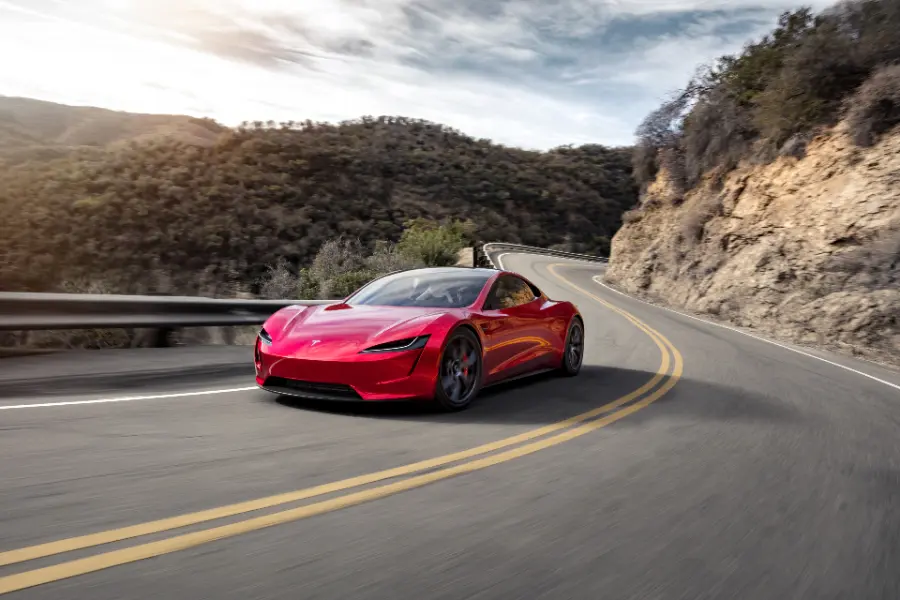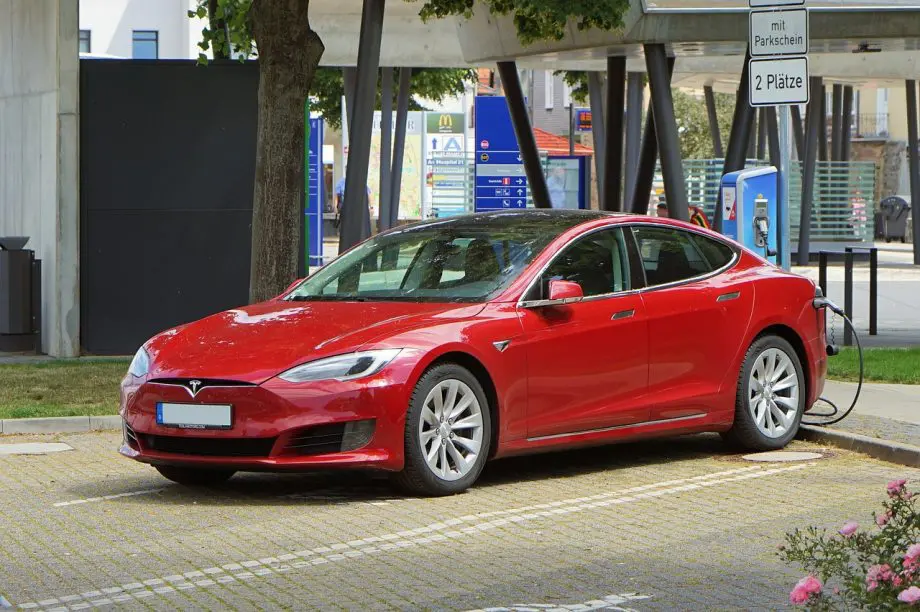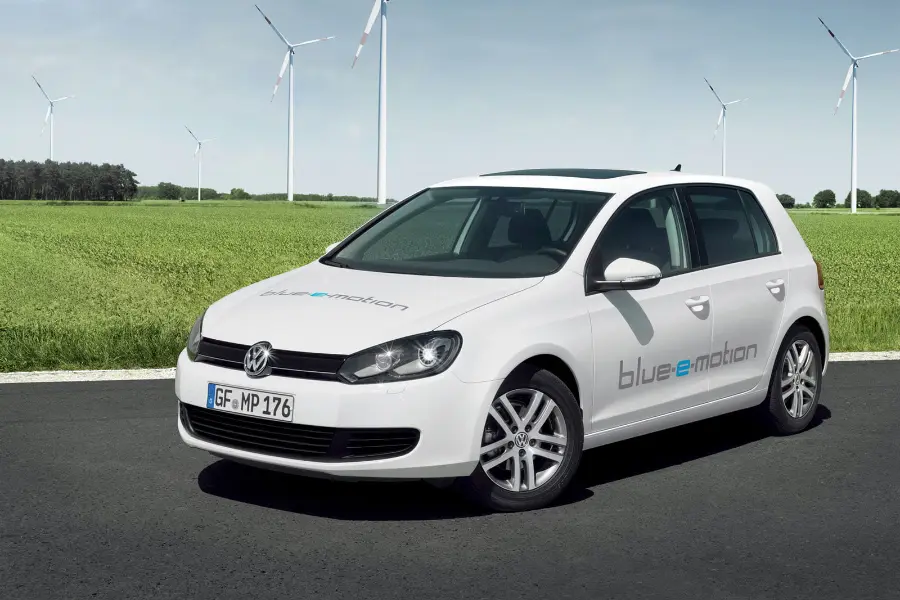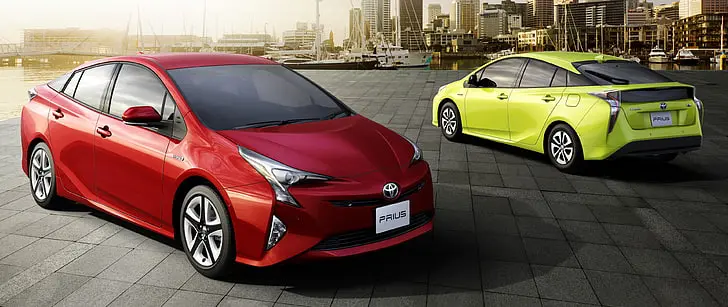
Explore the advantages and challenges of electric bikes in our comprehensive guide. Uncover the history, benefits, and potential hurdles of e-biking today!
Ever wondered about the buzz surrounding electric bikes? Well, you’re in the right place! Our journey today takes us through the fascinating world of e-bikes, exploring the advantages and challenges of electric bikes. From their eco-friendly appeal to the ease of zipping through city streets, e-bikes are revolutionizing how we think about commuting. But it’s not all smooth riding; we’ll also delve into the hurdles you might encounter. So, buckle up and let’s embark on this electrifying adventure together!
Advantages and Challenges of Electric Bikes
Welcome to our deep dive into the world of electric bikes! In this comprehensive guide, we’ll be exploring the many advantages and challenges of electric bikes. We’ll cover everything from their history and evolution, to the numerous benefits they offer, and even the potential obstacles you might face. Whether you’re a seasoned e-biker or a curious newcomer, we’ve got something for you. We’ll also tackle some frequently asked questions and decode the jargon that often surrounds this topic. So, sit back, relax, and join us as we unravel the electrifying world of e-bikes!
Brief Overview of Electric Bikes
Electric bikes, or e-bikes as they’re often called, are a fantastic blend of traditional cycling and modern technology. Imagine your normal bike, but with a little extra oomph! That’s what an e-bike brings to the table. These bikes come equipped with an electric motor that can assist your pedaling or even take over when you need a break. They’re like your trusty old bike, but with a superpower! Whether you’re tackling a steep hill or going long distances, an e-bike can make the journey a lot more manageable and enjoyable.
Importance and Relevance of the Topic
Now, you might be wondering, Why all this fuss about electric bikes? Well, e-bikes are more than just a trendy topic. They’re transforming the way we think about transportation. With concerns about climate change and urban congestion on the rise, e-bikes offer a sustainable and efficient solution. They’re a great way to reduce our carbon footprint, all while enjoying the fresh air and staying active. Plus, with more and more people discovering the joys and benefits of e-biking, understanding the advantages and challenges of electric bikes has never been more relevant. So, whether you’re considering getting an e-bike or just curious about them, you’re in the right place!
Check out Electric Bikes on Amazon
History and Evolution of Electric Bikes
Ready to hop into our time machine? Let’s journey back to the origins of electric bikes and see how they’ve evolved over the years. From their humble beginnings to the sleek, high-tech machines we see today, the history of e-bikes is a fascinating tale of innovation and perseverance. It’s a story that reflects our constant quest for better, more efficient ways to move around. So, whether you’re a history buff or just curious about how your e-bike came to be, this trip down memory lane promises to be an enlightening ride!
The Inception of Electric Bikes
Believe it or not, the concept of electric bikes isn’t as modern as you might think. The idea has been around since the late 19th century! The first patent for an electric bicycle was registered by Ogden Bolton Jr., an American inventor, back in 1895. His design included a hub motor mounted in the rear wheel, a concept that was overlooked for a long time but has made a significant comeback in recent years. So, while the technology and design have evolved, the core idea remains the same: to enhance the cycling experience with a bit of electric assistance.
Evolution and Advancements Over the Years
The journey from Bolton’s initial design to the e-bikes we know today has been a long one, filled with innovation and technological advancements. Over the years, e-bikes have seen significant improvements in terms of battery life, motor efficiency, and overall design. In the early days, e-bikes were bulky and heavy, with limited range. But thanks to advancements in technology, today’s e-bikes are lighter, more powerful, and more efficient. They come with features like pedal assist, rechargeable lithium-ion batteries, and even smart capabilities like GPS tracking and performance monitoring. It’s safe to say that e-bikes have come a long way since their inception from traditional bicycles, and they continue to evolve as technology advances.
Advantages of Electric Bikes
Let’s shift gears and delve into the many perks of riding an electric bike. If you’ve ever wondered why e-bikes have been gaining popularity, you’re about to find out! From making your commute easier to reducing your carbon footprint, the advantages of electric bikes are plentiful and varied. They’re not just about getting from point A to point B; they’re about enhancing your overall cycling experience. So, whether you’re an avid cyclist or someone who hasn’t ridden a bike in years, there’s a good chance you’ll find something to love about e-bikes. Let’s dive in and discover what makes them such a game-changer!
Efficiency and Ease of Use
One of the biggest advantages of electric bikes is their efficiency. With the added boost from the electric motor, you can cover longer distances and tackle challenging terrains with less effort. Say goodbye to arriving at work drenched in sweat after a tough uphill commute! Plus, most e-bikes come with different levels of assistance, so you can adjust the amount of help you get from the motor. This makes e-bikes incredibly user-friendly and adaptable to a wide range of fitness levels and cycling preferences.
Environmental Impact
If you’re conscious about your carbon footprint, then e-bikes are a great choice. They’re much more energy-efficient than most modes of transportation, including cars and even match conventional bikes for environmental benefits. By choosing to ride an e-bike, you’re not just making a decision that benefits you, but also one that benefits our planet. It’s a small step towards reducing our reliance on fossil fuels and combating global warming.
Health and Fitness Benefits
Don’t be fooled by the electric assistance; riding an e-bike can still give you a solid workout! You’re still pedaling and using your muscles, but you can go for longer rides without overexerting yourself. This makes e-bikes a fantastic option for those looking to improve their fitness levels, lose weight, or simply stay active. Plus, cycling is a low-impact exercise, making it easier on your joints than running or other high-impact activities.
Cost-Effectiveness
While the initial cost of an e-bike might be higher than a regular bike, they can be more cost-effective in the long run. Think about the money you’ll save on fuel, parking, and car maintenance if you switch to commuting by e-bike. Not to mention, e-bikes require less physical effort than a conventional bike, which means you won’t be as tired and might not need that extra cup of coffee to get you through the day!
Versatility and Accessibility
Finally, e-bikes are incredibly versatile and accessible. They’re suitable for a wide range of people, from those who are new to cycling, to those with physical limitations, to seasoned cyclists looking for a new challenge. They can be used for commuting, recreational riding, or even off-road adventures. Plus, with the growing network of bike lanes and paths in urban areas, it’s becoming easier and safer to get around on an e-bike.
Challenges and Cons of Electric Bikes
While e-bikes come with a host of benefits, it’s only fair that we also shed light on some of the cons of electric bikes. After all, no mode of transportation is perfect, and e-bikes are no exception. From initial costs to maintenance needs, there are a few hurdles that potential e-bike owners might face. But don’t worry, understanding these challenges is the first step to overcoming them. So, let’s navigate through the less-traveled path and uncover the challenges of electric bikes together!
Initial Cost
Let’s start with the elephant in the room: the initial cost. Electric bikes can be quite an investment, especially when compared to traditional bikes. The price tag often reflects the quality of the components, including the motor, battery, and other electronic parts. While it’s true that you might save money in the long run with reduced transportation costs, the upfront cost can be a hurdle for some.
Battery Life and Charging Time
Next up is the battery life and charging time. While e-bikes can take you further with less effort, they’re still limited by the capacity of their battery. Depending on the model, you might get anywhere from 20 to 50 miles on a single charge. And when the battery runs out, you’ll need to charge it, which can take several hours. So, if you’re planning a long ride, you’ll need to plan your stops and charges accordingly.
Regulations and Legal Restrictions
Just like with any vehicle, there are regulations and legal restrictions that apply to e-bikes. These can vary greatly depending on where you live. Some places classify e-bikes as bicycles, allowing them to be used anywhere a regular bike can go. Others might have speed restrictions or require special permits. It’s important to be aware of the local laws and regulations in your area before hopping on an e-bike.
Maintenance and Servicing
While e-bikes generally require less physical effort to ride, they can require more effort to maintain. In addition to the regular maintenance that all bicycles need, e-bikes also have electrical components that might need servicing. This includes the battery, motor, and any electronic controls or displays your e-bike might have. While these components are designed to be durable, they can wear out or break down and may need to be replaced.
Weight and Portability
Lastly, e-bikes tend to be heavier than their non-electric counterparts. This is one of the disadvantages of electric bikes. This is due to the added weight of the motor and battery. While this might not be an issue while you’re riding (thanks to the electric assist), it can make the bike harder to transport or carry up stairs. If portability is a concern, there are lighter models available, and even some that are foldable but they often come with a higher price tag.
FAQs about Electric Bikes
Got questions about electric bikes? You’re not alone! As e-bikes continue to gain popularity, so does the curiosity around them. From battery life to the ‘cheating’ debate, there are plenty of questions that often come up in conversations about e-bikes. In this section, we’ll tackle some of the most frequently asked questions about electric bikes. So, if you’ve been wondering about something, chances are you’ll find the answer here. Let’s dive into the FAQs and clear up some of the mysteries surrounding e-bikes!
Q: How far can an e-bike travel on a single battery charge?
A: The distance an e-bike can travel on a single charge, often referred to as its range, can vary greatly depending on several factors. These include the battery capacity, the level of motor assistance you use, the terrain, and even your weight. However, on average, you can expect to travel anywhere from 20 to 50 miles on a single charge.
Q: How long does it take to charge an e-bike’s battery?
A: Charging times for e-bike batteries can vary depending on the battery size and the charger. However, most batteries will fully charge in 3 to 6 hours. Some high-capacity batteries or slower chargers might take up to 8 hours.
Q: How fast can I go on an e-bike?
A: The maximum speed of an e-bike can depend on the type of e-bike and local regulations. However, most e-bikes in the United States are limited to higher speeds of 20 to 28 mph when using the electric assist.
Q: How much does a typical e-bike cost to run in terms of electricity?
A: E-bikes are incredibly cost-effective when it comes to electricity usage. On average, it costs less than a few cents to fully charge an e-bike battery. Of course, this can vary depending on local electricity rates.
Q: How long will my battery last?
A: E-bike batteries are typically rated for a certain number of charge cycles, usually somewhere between 500 and 1,000. This means that rechargeable batteries should last for several years of regular use. However, the actual lifespan can vary depending on how the battery is used and maintained.
Q: How often will I need to get it serviced?
A: Just like a regular bike, an e-bike should be serviced regularly to keep it in good working order. This includes checking the brakes, tires, and gears, as well as the electrical components. A general rule of thumb is to have your e-bike serviced at least once a year, or more often if you ride it heavily.
Q: What if the electronics on an e-bike get wet?
A: Most e-bikes are designed to withstand normal weather conditions, including rain. The battery and motor are typically sealed to prevent water damage. However, it’s not a good idea to submerge your e-bike in water or to leave it out in extreme weather conditions.
Q: Aren’t electric bikes cheating?
A: This is a common question, and the answer largely depends on your perspective. E-bikes do provide an advantage over regular bikes in terms of speed and effort, especially on hills or long rides. However, they still require pedaling and provide a form of exercise. Plus, they can enable more people to enjoy cycling, including those who might not be able to ride a regular bike due to health or fitness levels. So, while they might give you an ‘electric boost’, calling it cheating might be a bit of a stretch!
Advantages and Challenges of Electric Bikes Conclusion
As we approach the end of our e-bike journey, it’s time to reflect on what we’ve learned. From understanding the history and evolution of electric bikes, to weighing their advantages and challenges, we’ve covered a lot of ground. But as with any journey, it’s not just about the destination, but also about the insights gained along the way. So, let’s take a moment to recap the main points and share some final thoughts on the electrifying world of e-bikes. Whether you’re already an e-bike enthusiast or considering becoming one, we hope this guide has been enlightening!
Recap of the Main Points
We started our journey with a brief overview of electric bikes and their relevance in today’s world. We then delved into the history and evolution of e-bikes, tracing their journey from a simple concept in the late 19th century to the advanced machines we see today. We explored the many advantages of e-bikes, including their efficiency, environmental impact, health benefits, cost-effectiveness, and versatility. But we also didn’t shy away from discussing the challenges, such as the initial cost, battery life, regulations, maintenance needs, and weight.
We then addressed some frequently asked questions about e-bikes, providing answers to common queries about battery life, speed, cost, maintenance, and more. Through it all, we aimed to provide a comprehensive and balanced view of e-bikes, highlighting both their benefits and potential drawbacks.
Final Thoughts and Personal Opinion
Electric bikes are more than just a trend; they’re a testament to human ingenuity and our constant pursuit of better, more sustainable ways of getting around. They offer a unique blend of convenience, fitness, and environmental friendliness that few other modes of transportation can match. While they do come with their own set of challenges, the benefits they offer make them a worthwhile consideration for anyone looking to change up their commute, get more active, or simply have some fun exploring their local bike paths. As we continue to innovate and improve e-bike technology, there’s no doubt that their popularity and relevance will only continue to grow. So, whether you’re already a fan or just starting to consider the idea, the world of e-bikes is an exciting place to be!
Glossary of E-bike Terms
Before we wrap up, let’s take a moment to demystify some of the jargon that often comes with the territory of e-bikes. Whether it’s ‘pedelec’, ‘hub motor’, or ‘lithium-ion’, these terms can sound like a foreign language if you’re new to the world of e-bikes. But fear not! We’ve put together a handy glossary of e-bike terms to help you navigate the lingo like a pro. So, let’s dive in and decode the language of e-bikes together!
Explanation of Common E-bike Jargon
E-bike: Short for electric bike, it’s a bicycle equipped with an electric motor that can assist with pedaling.
Pedelec: A type of e-bike where the electric motor only provides assistance when the rider is pedaling.
Hub Motor: This is the electric motor that is typically located in the center of the front or rear wheel of the e-bike.
Mid-Drive Motor: An electric motor located at the middle of the bike, usually at the bottom bracket, for better weight distribution and balance.
Lithium-ion Battery: A type of rechargeable battery commonly used in e-bikes due to its light weight and high energy density.
Battery Capacity: Measured in watt-hours (Wh), it determines how much power the battery can deliver over time, affecting the e-bike’s range.
Range: The distance an e-bike can travel on a single battery charge.
Charge Cycle: One full discharge of a battery, from 100% to 0%, and then recharged back to 100%.
Throttle: A feature on some e-bikes that allows you to engage the motor without pedaling, similar to a motorcycle.
PAS (Pedal Assist System): A system that senses your pedaling and provides motor assistance accordingly.
Regenerative Braking: A feature on some e-bikes that allows the motor to act as a generator when braking, converting the energy that would otherwise be wasted into battery power.
Class 1, 2, and 3 E-bikes: Classification system in the United States for e-bikes, based on their top assisted speed and whether they have a throttle. Class 1 e-bikes are pedal-assist only, with no throttle, and a maximum assisted speed of 20 mph. Class 2 e-bikes have a throttle and a maximum assisted speed of 20 mph. Class 3 e-bikes are pedal-assist only, with no throttle, and a maximum assisted speed of 28 mph.
Remember, understanding the terminology can help you make a more informed decision when choosing an e-bike and enhance your overall e-bike experience. Happy e-biking!















